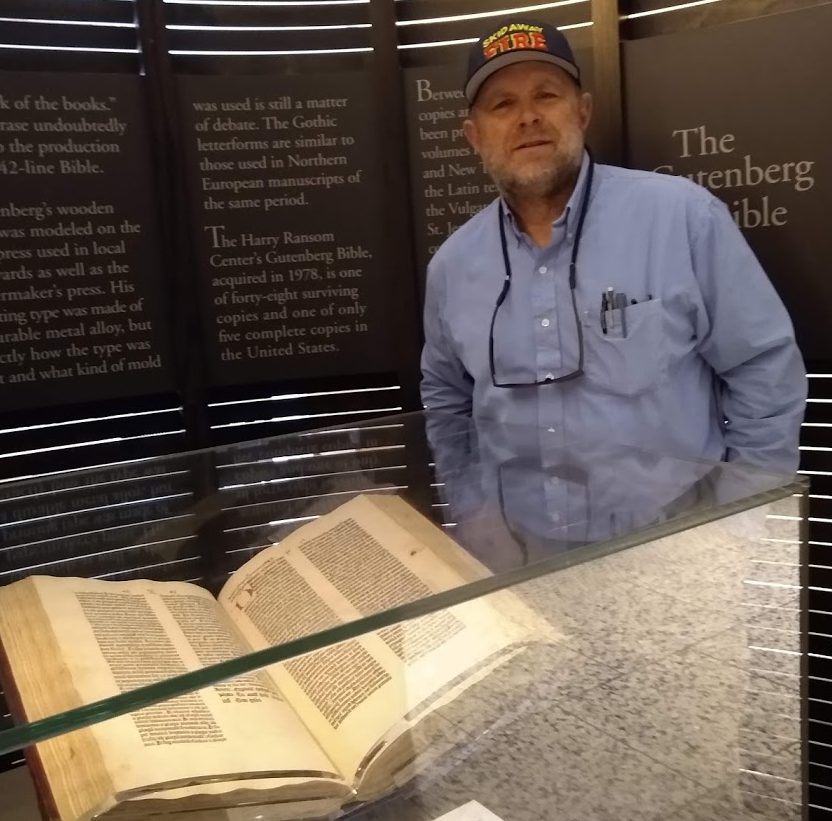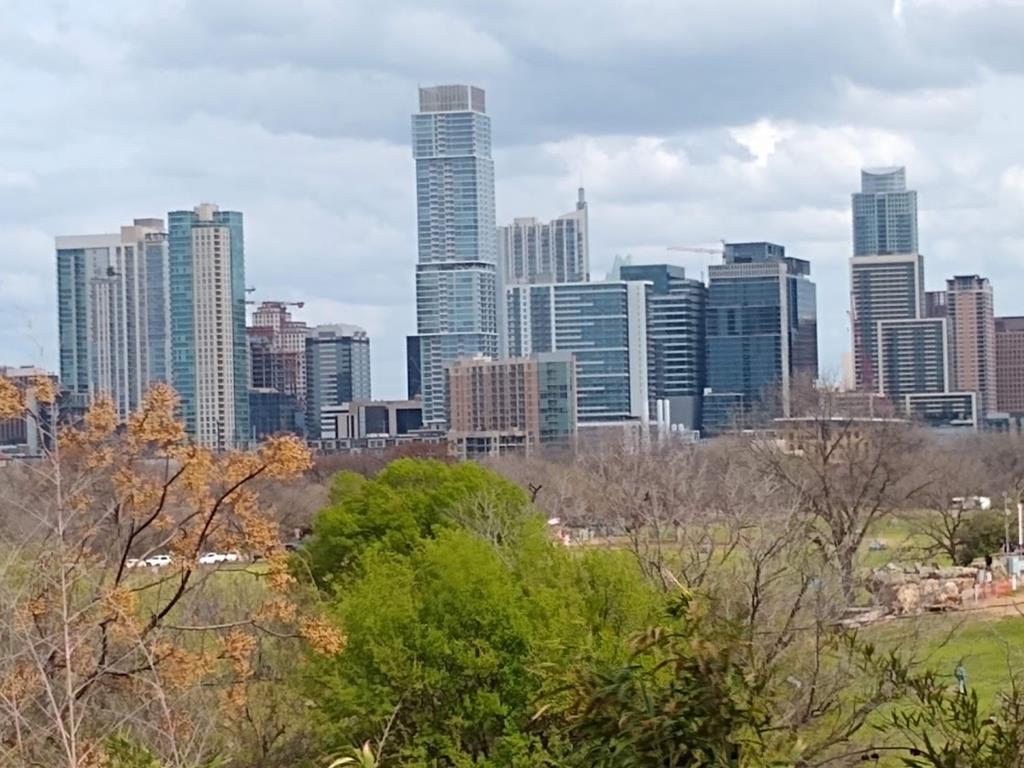
The other day I was telling someone about going to Austin in early March. He told me of all the places he lived, that he liked Austin the best, that it was a blueberry in a bowl of tomato soup (that’s a political joke, you’ll have to figure it out).
Was it only two months ago that I was in Austin? This is a weird time we’re living. In early March, two days before I flew down for a seminar by the Foundation for Reformed Theology on the writings of John Leith, a Presbyterian theologian of the second half of the twentieth century, South by Southwest was cancelled. I didn’t realize just how large of a music event this was, which may have explained why there were so few rental cars available. But I flew down in flights that, once they called up standbys, were full. This was only two months ago.
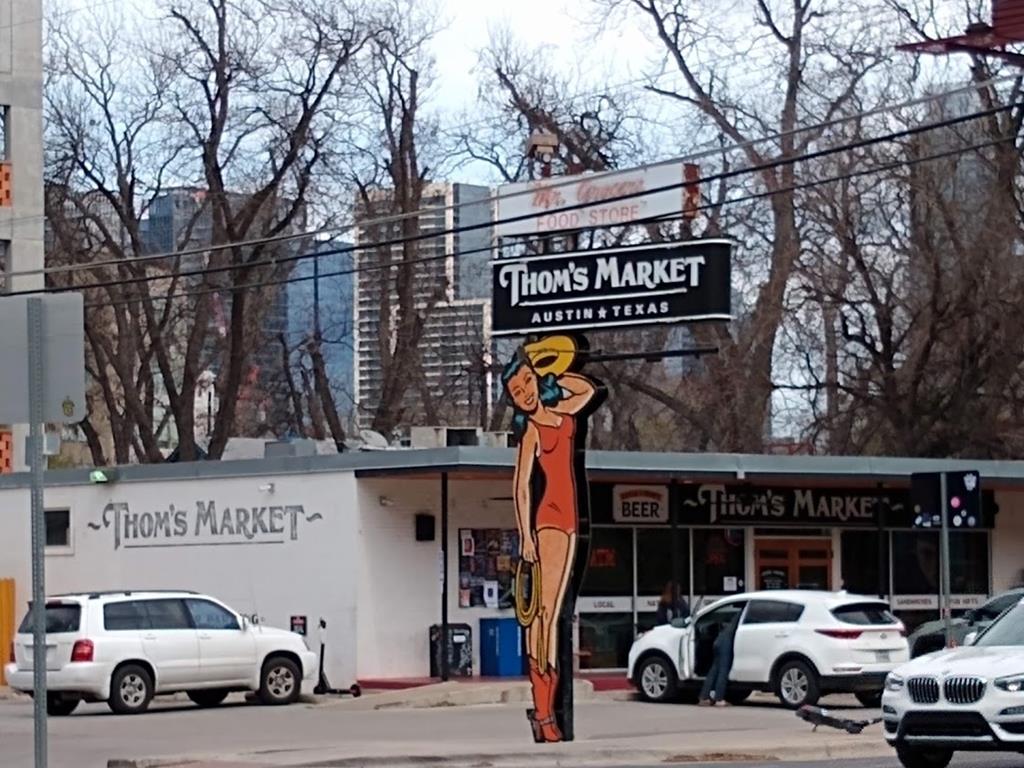
My flight options into Austin from Savannah were not great. Since I had to be at Austin Theological Seminary on Monday at nine in the morning, I considered preaching on Sunday and then flying down. But by waiting until the afternoon, the earliest I could get to Austin was 10:30 PM, which would have put me exhausted. Instead, I decided to fly down early on Saturday. This would leave me a day and a half to explore the city, before engaging in discussions. It was a good choice. On March 7th, I took an early flight to Atlanta and then on to Austin, arriving in the city at 11 AM. I’d decided to forgo renting a car, so I took a bus (that seemed to be waiting on me) into town. I got off just north of University of Texas’ campus and two blocks south of the seminary. It was a few minutes after noon when I arrived.
The guy at the guest counter was accommodating for my early arrival. I dropped my bags in my room. While they normally don’t have food service during the weekend, this day there was a multi-cultural seminar going on and some of the faculty, who were talking behind me as I asked the person at the desk where to go for lunch, invited me to join them. I had wonderful homemade tamales and other Mexican and Native American food. It was made even better as I got to talk over lunch with a number of the students at the seminar.
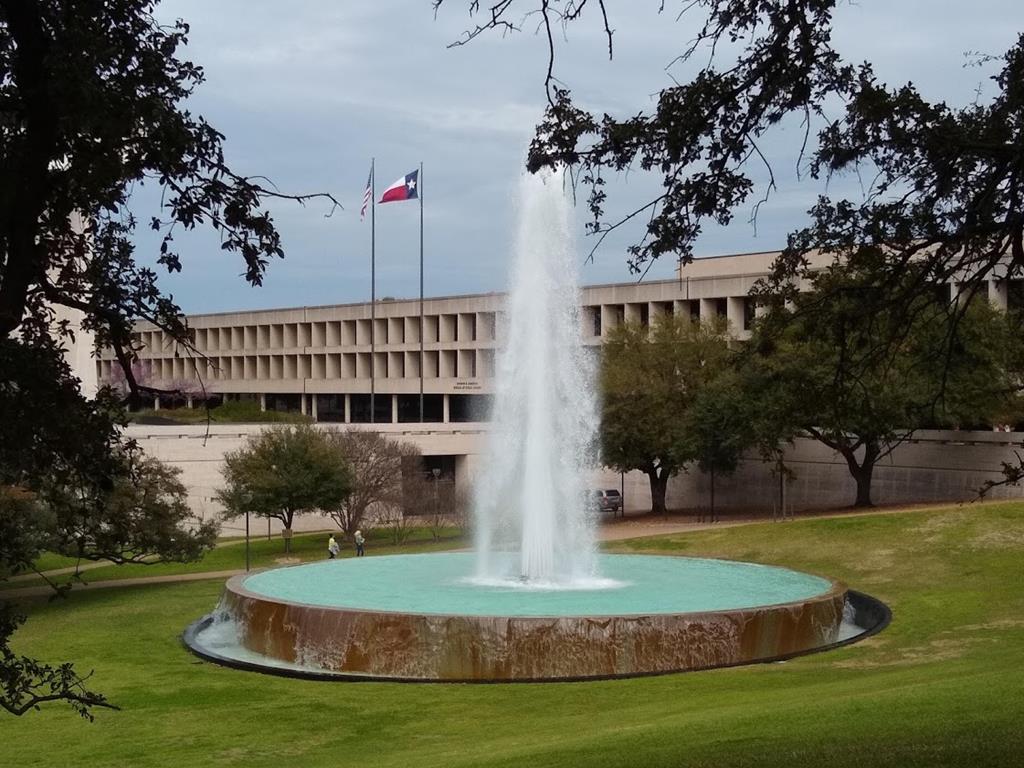
Then I headed out. As I have been reading Robert Caro’s multi-volume biography of the first President I can really remember, Lyndon Johnson, I head over to his library and museum on the east side of UT’s campus. I was curious of the spin they’d put on this complex man. I thought the library looked like an oversized mausoleum. As I came into the museum, a docent greeted me. I was told that it was a free day, which surprised me, but I didn’t complain. We talked a few minutes and I had to tell him the first joke I can remember, which probably came from an old Boy’s Life magazine around 1965:
What do you get when you up your finger in the President’s ear?
Johnson’s wax.
I was sure he had heard it, but it turns out he had not and had me tell it to a few others working in the museum. While the museum was honest about some of LBJ’s struggles and failures, it avoided dealing with some of his childhood and education issues and the extramarital affairs he had. Caro tells of LBJ’s affair with the wife of one of his big financial supporters. Forget morality, that took nerve (and a lot of risk)! One of the neat displays had a wax figure of Johnson telling jokes. LBJ was known for his jokes and stories (and getting into people’s faces).
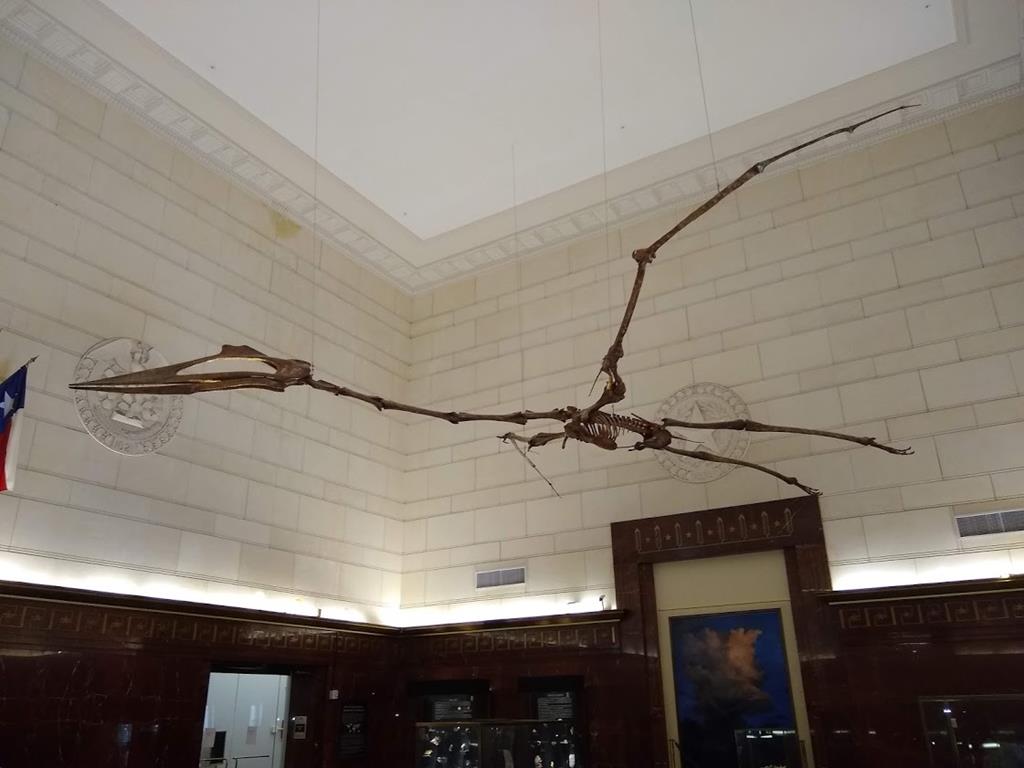
It was around 4:30 when I left the library. I headed over to the Texas Memorial museum. By the time I got there, I only had 20 minutes, but since I was told the day was free, I decided to see what I could. I also asked why things were free and learned that this day, at the beginning of the South-by-Southwest festival, is the traditional day for upcoming freshmen to visit the University of Texas. So, they made things free. The orientation day had been canceled, but they kept the museums free. The Memorial Museum focuses on natural history and has a huge skeleton of a prehistoric bird that practically fills the main room on the first floor. Texas does like to show off how big things are there.
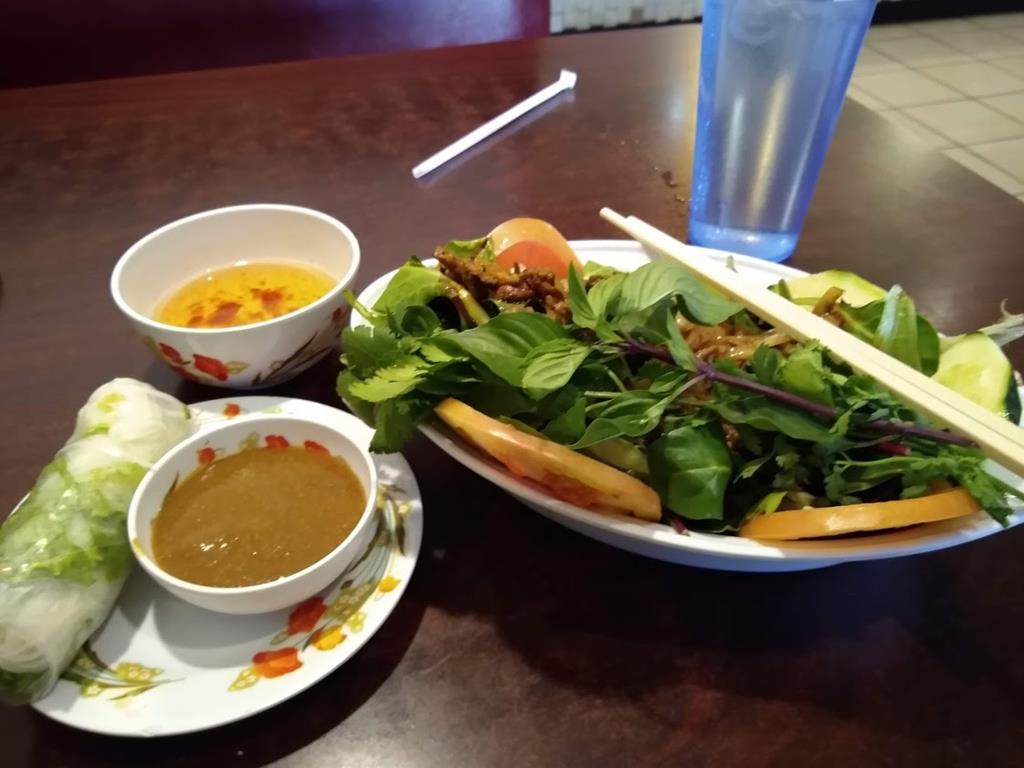
After my rush tour through the Natural History Museum, I walked over to Pho Thai Son, a Vietnamese restaurant I’d seen along Guadalupe Street, on the far side of the campus. I enjoyed an evening meal of Pork and Lemon Grass on a salad base. I then walked back to my room at the Seminary and went to bed early.

I’d decided to attend church at Central Presbyterian, which was about a mile and a half walk from the seminary. It was the day we changed to daylight saving time, but since I was an hour off from my usual time, I didn’t notice losing the hour. Since there was no meal service at the seminary on the weekends, I left early hoping that I could find something to eat along the way. Walking through the campus on the “Speedway,” I came upon a unique sculpture. I often wondered what happened to all those old aluminum canoes from the 70s. Now I know, they are welded into a canoe tree that stands to the side of the speedway (which is really a walkway). Getting to church early, without passing anyplace to eat, I find Bidemans Deli, a block to the west. I had breakfast and read till a few minutes before church was to begin at 10 AM. At church, they started with an announcement about the closing of South-by-Southwest. This church was a site for many of the musical venues, but without the event, they were out of a lot of money. I was impressed that the church included all types of people. There were homeless (which they feed afterwards) and those in suits. I was casually dressed as I planned to make the most of my day. Most of the congregation was on the younger side, but I learned that many of their regulars who were older were not there out of the fear of the virus. There was a guest preacher this day. He was articulate, and I enjoyed listening to him even if he spent a little too much time talking about himself and his family.
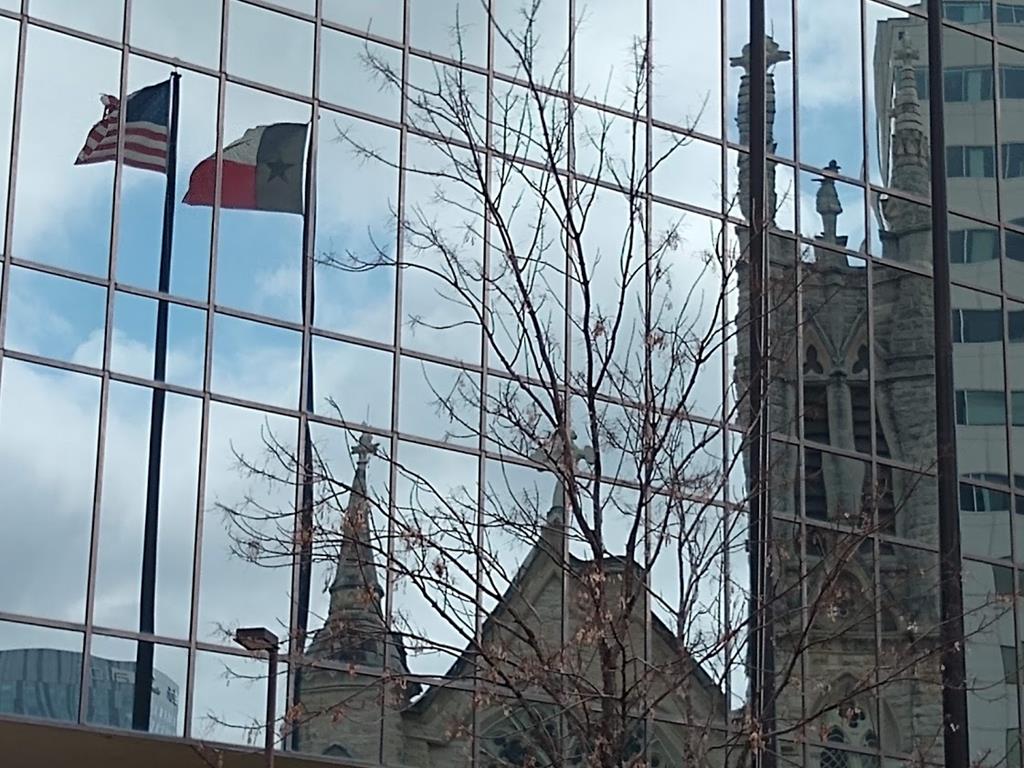
After church was over, I backtracked and attended the sermon part of the mass at the Catholic Cathedral. There, the priest must have been Vietnamese or from somewhere in Southeast Asia. His homily was packed with information, but he read the sermon and never made eye contact. I found myself wondering if he had even written the sermon, or if he was just reading someone else’s. However, unlike the Presbyterian Church where people were already staying away due to virus fears, the Catholic Church was packed. I listened to the homily and then left, heading to the capitol as my first stop as a tourist.
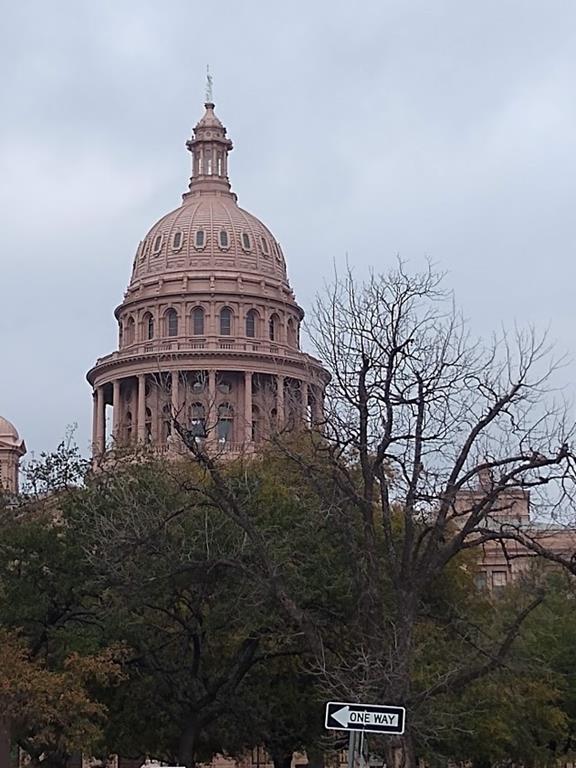
The Texas capitol looks a lot like the United States capitol, only dirty. It is also a few feet taller, something Texans are proud of and I have no idea how many people bragged about this to me. Not wanting to start a war, I did not tell them I thought their capitol looked dirty. I wanted to make it safely out of the state. The “dirty look” comes from the reddish colored marble. Originally, they were going to use limestone, but found that Texas limestone discolors. The contractor suggested importing white marble from Indiana, but that flew over about as well as a block of marble. Instead, they found a Texas quarry that could mine this reddish-brown marble and used it. Texas tried to build its capitol on the cheap (using convict labor). The miners in the quarry decided to strike instead of teaching the convicts how to do their job, which meant that the marble cost more than planned. But they saved on all other aspects of the building.
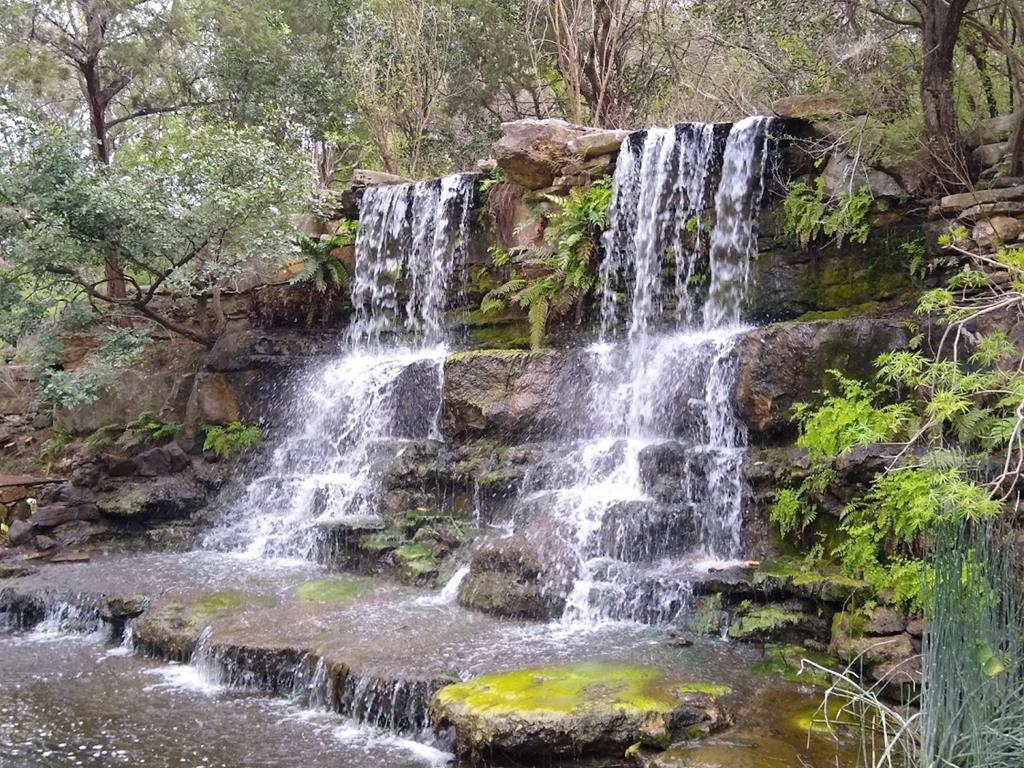
After touring the inside of the capitol, I walked around looking at the monuments dotting the grounds, then headed South. I had wanted to go see Ladybird Johnson’s wildflowers, but learned that was two miles beyond bus service. So instead, I headed to Zikler Botanical Garden. Walking south, I crossed the Colorado River on the Congress Avenue Bridge, known for its large colony of bats during the summer (they are not normally seen until April). Then I headed up Barton Springs Road, stopping for an ice cream cone to tide me over till dinner time. Along the way, I passed Terry Black’s Barbecue. They had five huge cookers going, using split hardwood. I talked with one of the pit workers and knew where I was going to go for dinner. I head on to the Botanical Gardens, which sit up on a hill overlooking Austin. I enjoy the view and the scenery, especially the Japanese garden. There were many lovely water features that started at the top of the hill and created cascading creeks flowing down the sides.
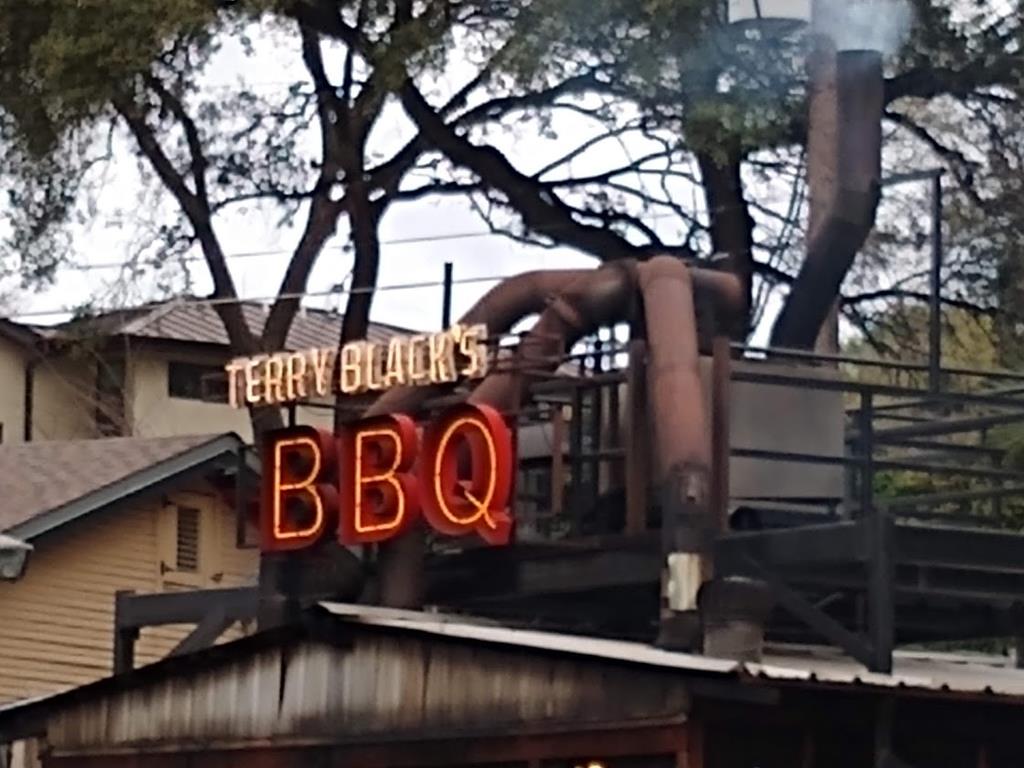 After a few hours of walking through the gardens and some time to write and read, I began my walk back along the river, watching several rowing crews practice on the water. Then I cut back over to Barton Springs Road, where I’m shocked at the line at Terry Black’s. I was told it was a 45-minute wait. If folks are waiting that long it must be good, I thought, and joined the line. It was. I had some of their pork and a brisket, both which were good. The banana pudding was passable.
After a few hours of walking through the gardens and some time to write and read, I began my walk back along the river, watching several rowing crews practice on the water. Then I cut back over to Barton Springs Road, where I’m shocked at the line at Terry Black’s. I was told it was a 45-minute wait. If folks are waiting that long it must be good, I thought, and joined the line. It was. I had some of their pork and a brisket, both which were good. The banana pudding was passable.
The sun was setting by the time I was fed. I continued back toward the campus several miles away, crossing the river on the Lamar Street bridge. I walked fast through a mostly empty city, arriving back at the campus around 8:30 PM. Several of those in the seminar had arrived and we talked a bit. They had not eaten and decide to go out for dinner while I read a bit before turning in early. It had been a good day and I figured I’d walked at least 15 miles.
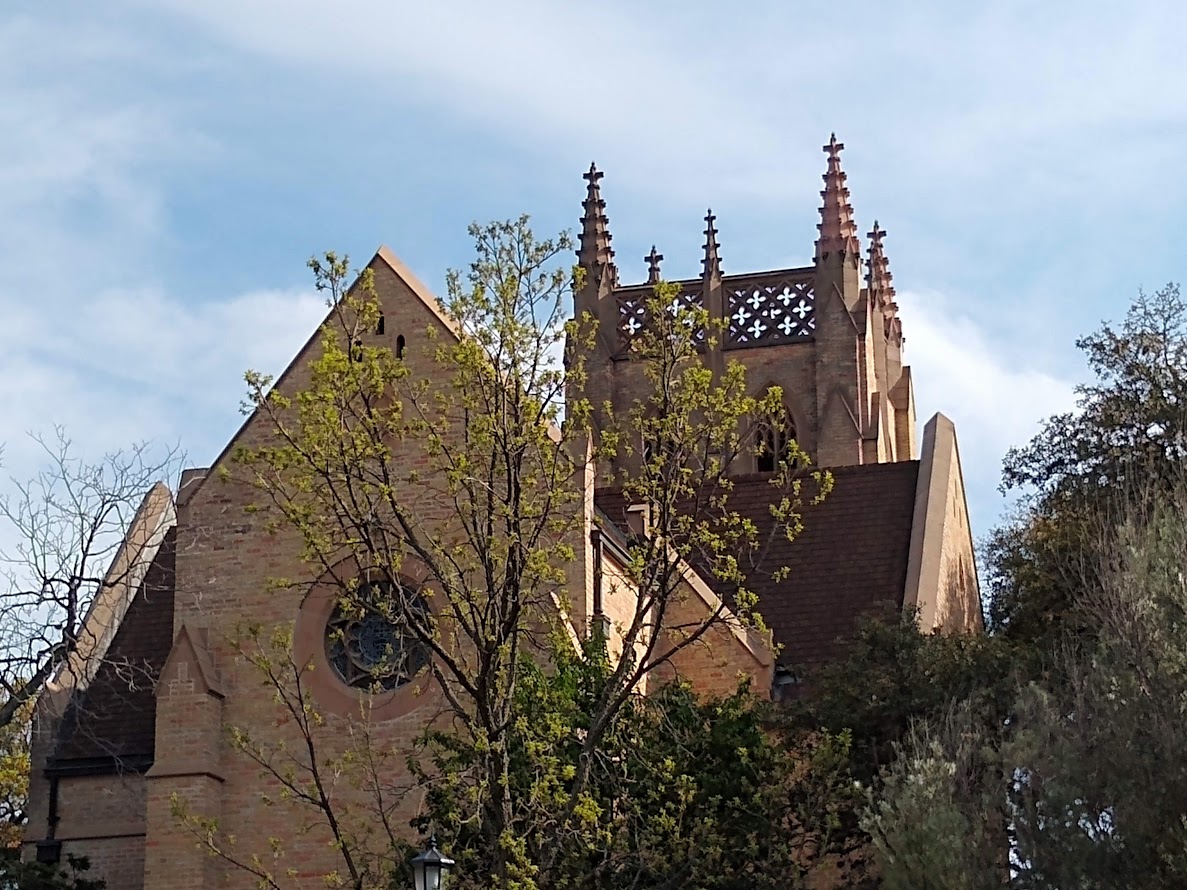
The rest of the week rushed by. We meet for three hours each morning and another three hours in the afternoon, followed by dinner. The first night was at La Mancha, a Tex-Mex establishment. On Tuesday night, we had barbecue at “The County Line,” which had a wonderful view of a stream that look so inviting for fishing. Wednesday, we ate “Hoovers,” a well known Southern cuisine establishment that’s been featured on “Diners, Drive-ins, and Dives.” All were excellent restaurants. While we were involved in talking and making presentations, we kept an eye on the stock market and on the news of the country shutting down due to COVID-19. The market was taking some huge drops, would regain a bit, then drop again. There was a weird feeling in the air. In the seminary’s lunchroom, they were wiping the tables and putting up safety signs.
On Wednesday evening, I worked on a letter to go out to the congregation. With staff, we sent drafts back and forth, ironing out safety procedures for worshipping during a pandemic. After several revisions and phone calls, they sent the letter (which I posted here) out on Thursday in an email blast.

Our last day was Thursday. John, another participant, and I had half a day, so we skipped the airport shuttle and walked over to the Harry Reason Center at UT’s campus. This building holds collections of interesting historical artifacts and papers. We both took pictures standing behind an original Gutenberg Bible. They had an exhibit of David Forster Wallace and Gabriel García Márquez, both of whom the Center holds many of their papers. Both exhibits were interesting. We then headed back to the seminary, picked up our bags and took the bus to the airport. It was March 12, and a completely different attitude could be felt. The place was not very crowded. We flew through security and after a final dinner, we were on our way home in half-filled airplanes. The world had changed.
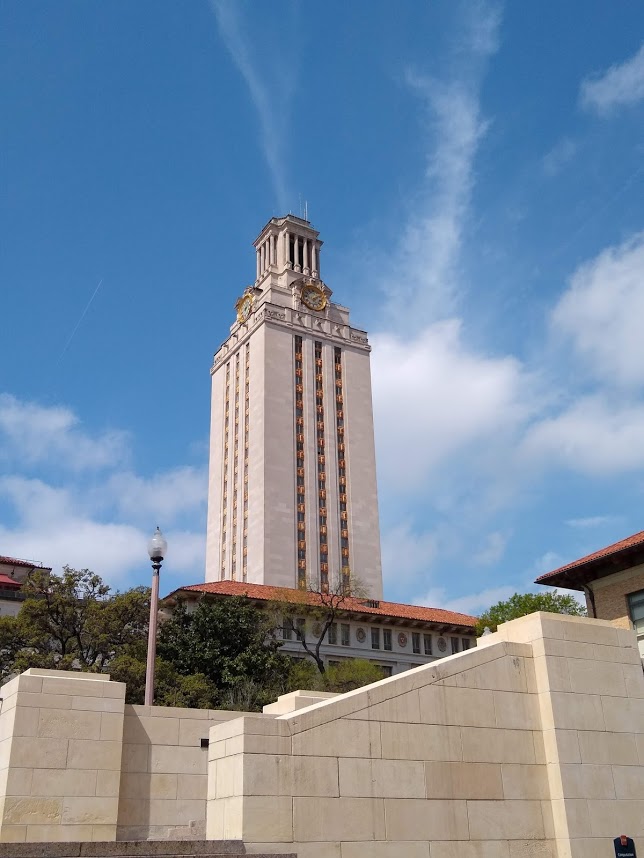
When I went into the office on Friday, exhausted from the travels, things were seriously shutting down. While we decided not to shut-down worship on Sunday, we sent another email out to the congregation, encouraging them to stay home and to watch our service via live-stream. All but one other of the churches on the island had closed. We only had around 35 in worship on March 15. It was the last week of any kind of regular service. Ever since, a skeleton crew of 6 or 7 have put together a live-streamed worship service. Our draft pandemic procedures were quickly made obsolete.
It now seems as if it was two years ago that I was walking around Austin.
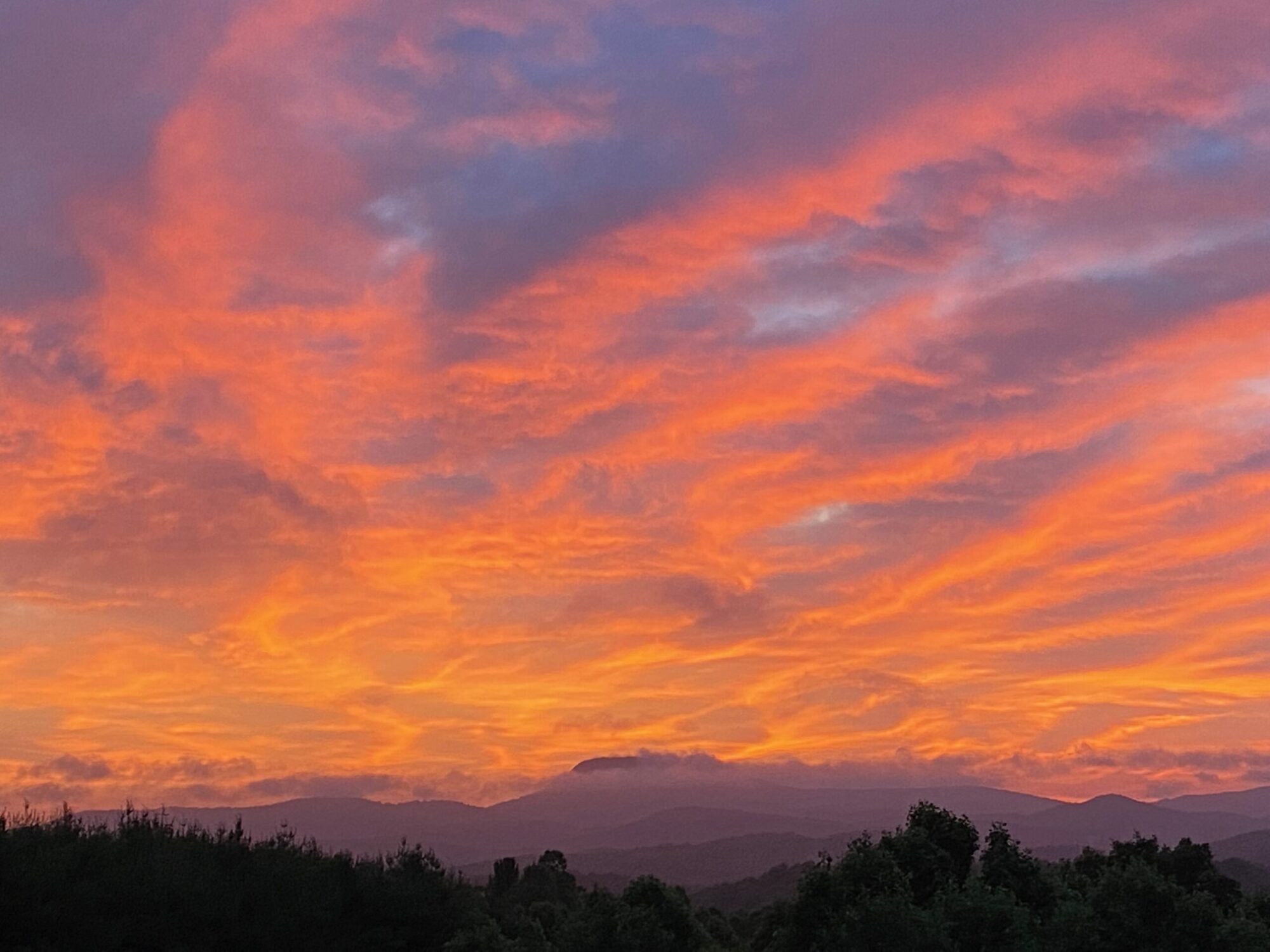

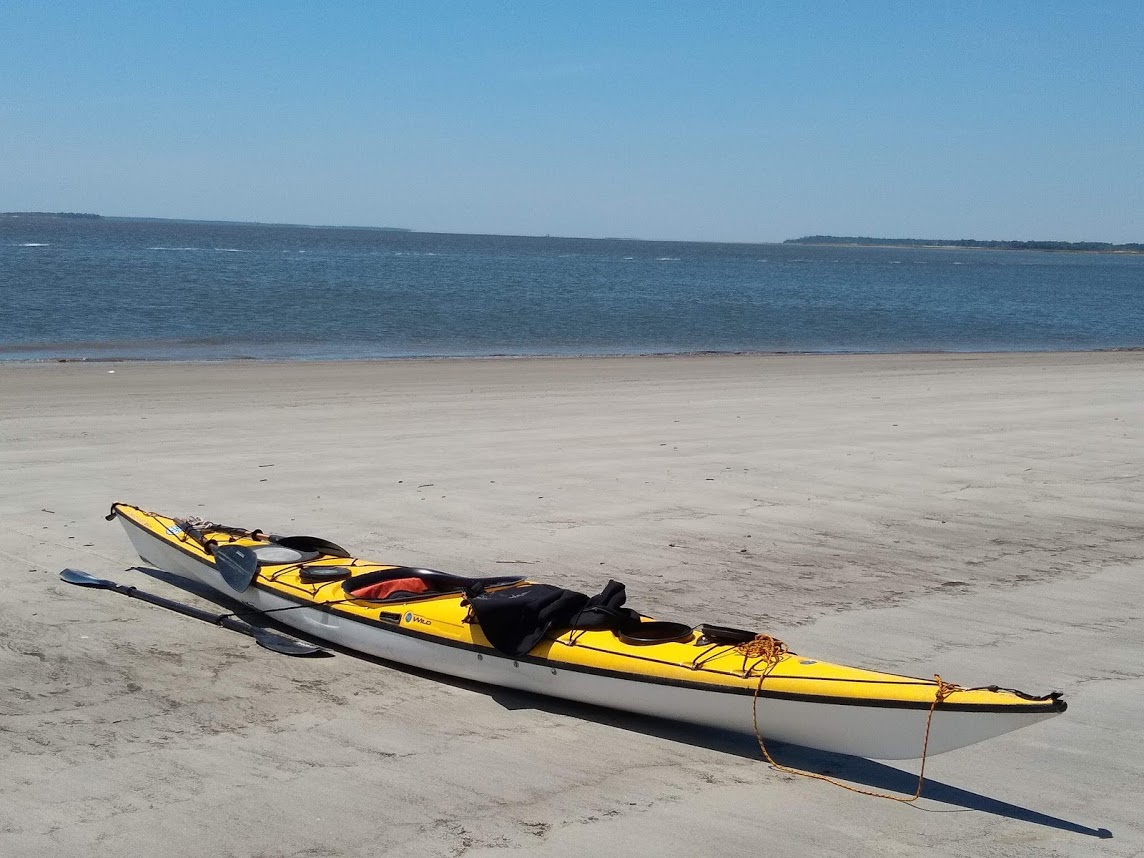
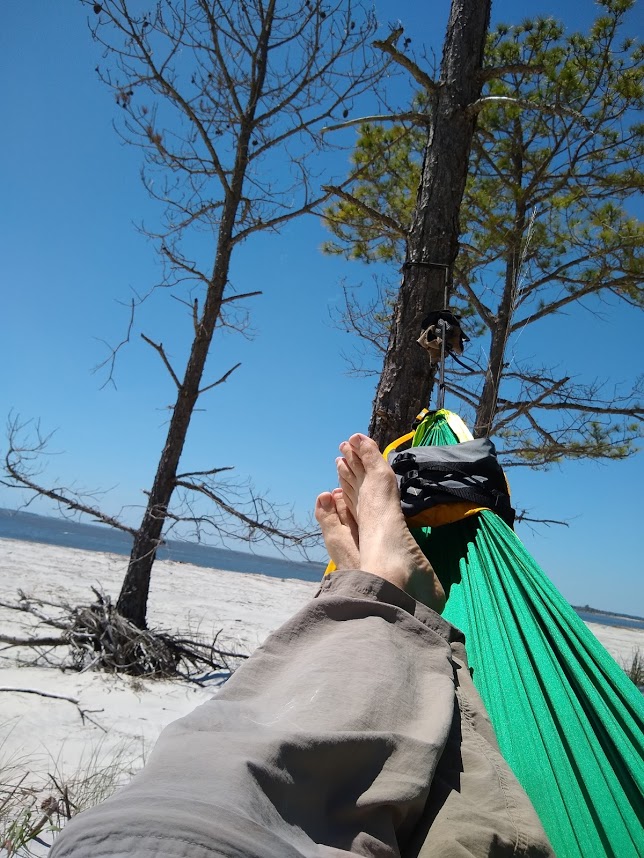
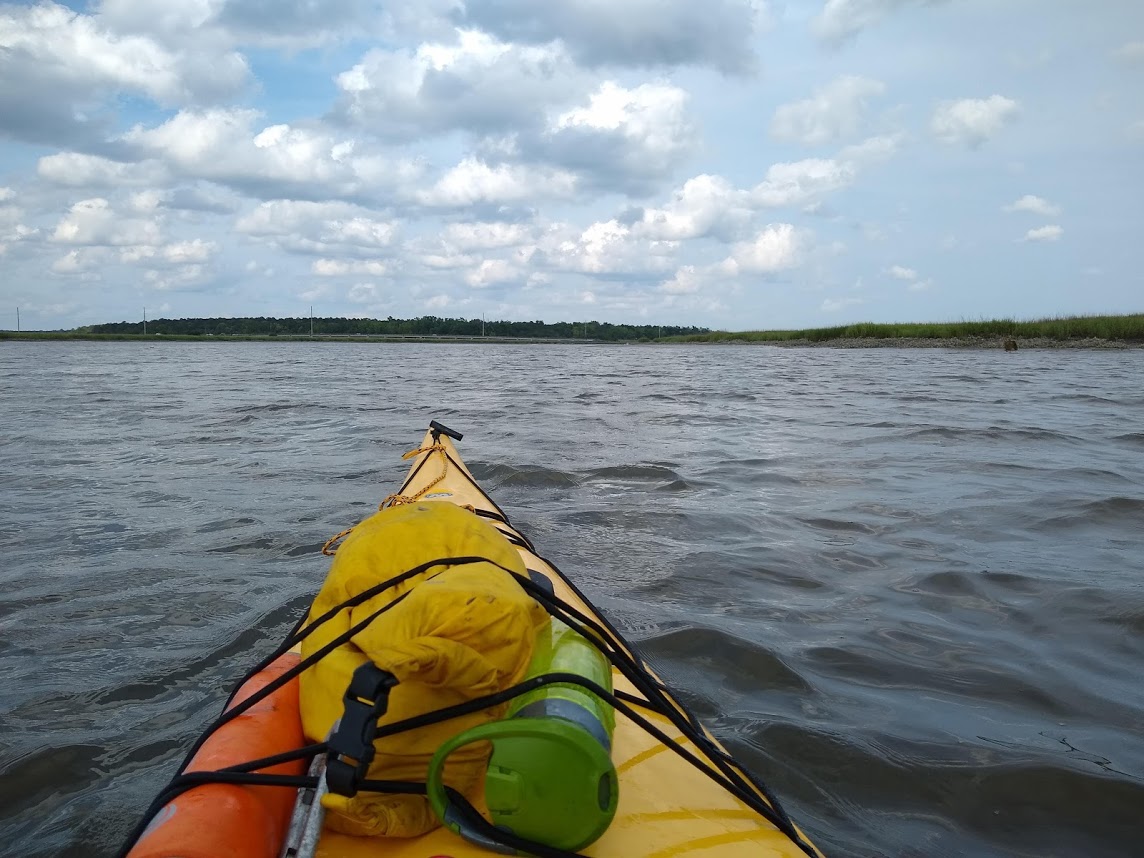

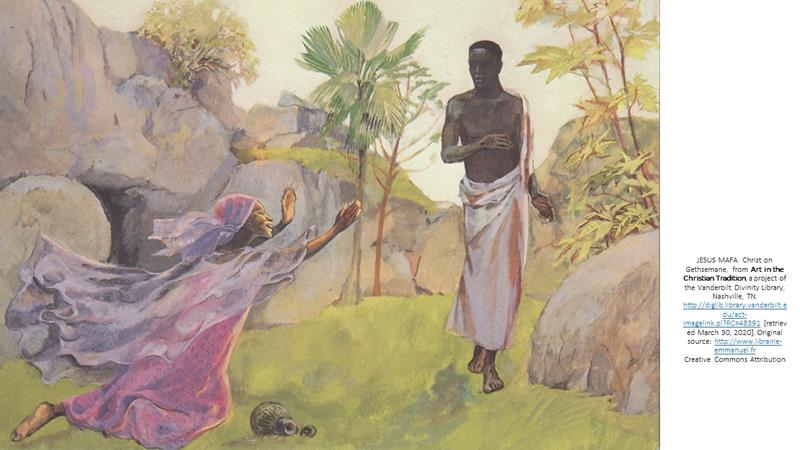 I’ve stuck by Jesus ever since I encountered him that day on the road, long before we came to Jerusalem, when he freed me of those seven demons that had tormented me.
I’ve stuck by Jesus ever since I encountered him that day on the road, long before we came to Jerusalem, when he freed me of those seven demons that had tormented me.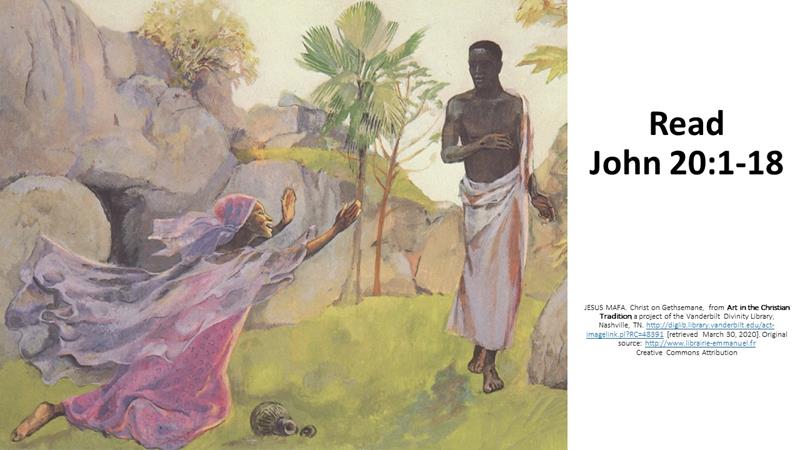
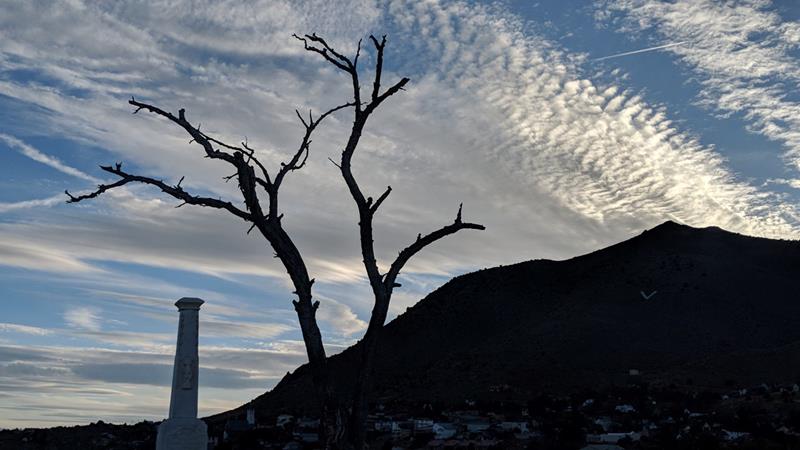 We have spent all of Lent looking at the last week of Jesus’ earthly ministry: From the entry into Jerusalem on what we call Palm Sunday, to the teachings at the temple and the various dinners and then the betrayal that led to Jesus’ death. On Friday, we appeared to be the end of the story. Jesus is dead. His lifeless body is sealed in a tomb as the sun is going down on the day for preparing for the Sabbath. Everyone returns to their homes or where they’ve been staying. I’m sure Caiaphas, the chief priest, and Pilate, the Roman governor, along others in leadership positions are glad to be done with this rabble-rouser. They may have even rested well on the Sabbath. Others, like the disciples and those who had followed Jesus were troubled. But they, too, felt it was over. They saw Jesus’ limp body be taken from the cross. But, as we know, the story doesn’t end.
We have spent all of Lent looking at the last week of Jesus’ earthly ministry: From the entry into Jerusalem on what we call Palm Sunday, to the teachings at the temple and the various dinners and then the betrayal that led to Jesus’ death. On Friday, we appeared to be the end of the story. Jesus is dead. His lifeless body is sealed in a tomb as the sun is going down on the day for preparing for the Sabbath. Everyone returns to their homes or where they’ve been staying. I’m sure Caiaphas, the chief priest, and Pilate, the Roman governor, along others in leadership positions are glad to be done with this rabble-rouser. They may have even rested well on the Sabbath. Others, like the disciples and those who had followed Jesus were troubled. But they, too, felt it was over. They saw Jesus’ limp body be taken from the cross. But, as we know, the story doesn’t end.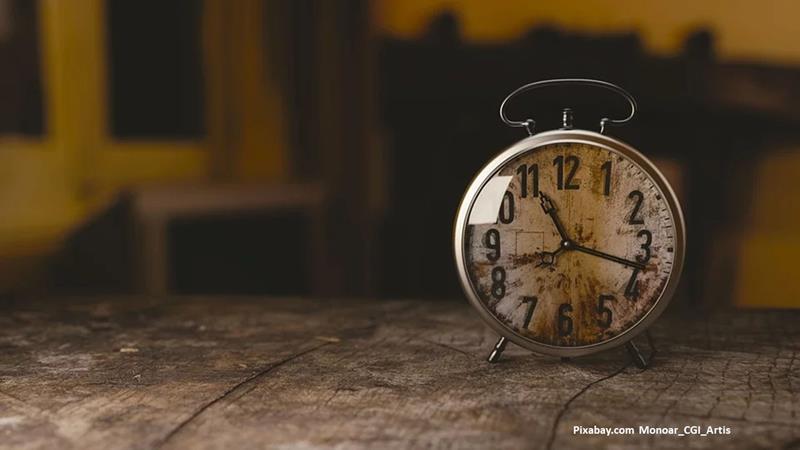 John begins the 20th Chapter with several statements about time. It’s early. It’s the first day of the week. In the first chapter, John’s gospel has an echo of Genesis. Both start the same way, “In the beginning…” John takes that well-known phrase from the opening chapter of Scripture and applies it to Jesus. Jesus, the Word, was with God at the beginning of creation. God is doing something new. As in the seven days of Creation, when God created heaven and earth, we now have a new week. In the first week of Creation, God created humanity, the crown of creation, on day six. Now, on day six, God once again does his triumphant work, reconciling a sinful humanity with the divine through the sacrifice of God’s Son. That’s Good Friday. God rests on the seventh day, the Sabbath, our Saturday. And then, on the first day of the new week, in those early morning hours, God begins a new age.
John begins the 20th Chapter with several statements about time. It’s early. It’s the first day of the week. In the first chapter, John’s gospel has an echo of Genesis. Both start the same way, “In the beginning…” John takes that well-known phrase from the opening chapter of Scripture and applies it to Jesus. Jesus, the Word, was with God at the beginning of creation. God is doing something new. As in the seven days of Creation, when God created heaven and earth, we now have a new week. In the first week of Creation, God created humanity, the crown of creation, on day six. Now, on day six, God once again does his triumphant work, reconciling a sinful humanity with the divine through the sacrifice of God’s Son. That’s Good Friday. God rests on the seventh day, the Sabbath, our Saturday. And then, on the first day of the new week, in those early morning hours, God begins a new age. As Paul proclaims, Christ is the first fruit of those who died.
As Paul proclaims, Christ is the first fruit of those who died.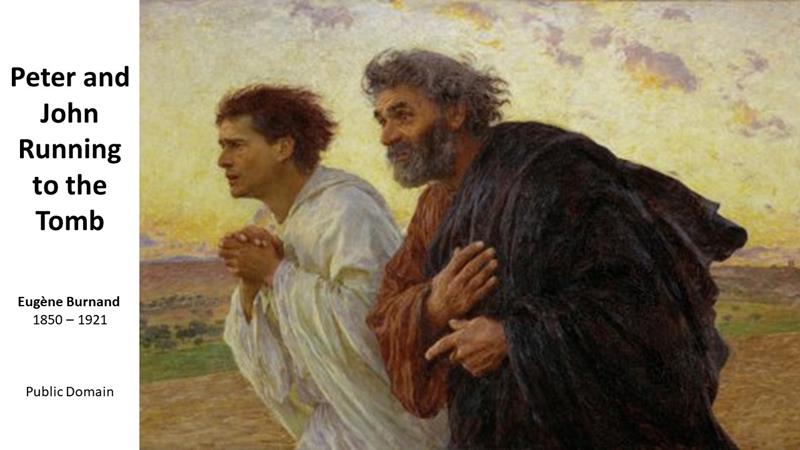 The reports of this new era start with a restless Mary Magdalene going to the tomb while it’s still dark and seeing that it’s open. Of course, her experience, as is ours, is that once you are dead, there’s no coming back. So she runs to tell the disciples. Two of them, Peter and probably John, race each other back to the gravesite.
The reports of this new era start with a restless Mary Magdalene going to the tomb while it’s still dark and seeing that it’s open. Of course, her experience, as is ours, is that once you are dead, there’s no coming back. So she runs to tell the disciples. Two of them, Peter and probably John, race each other back to the gravesite.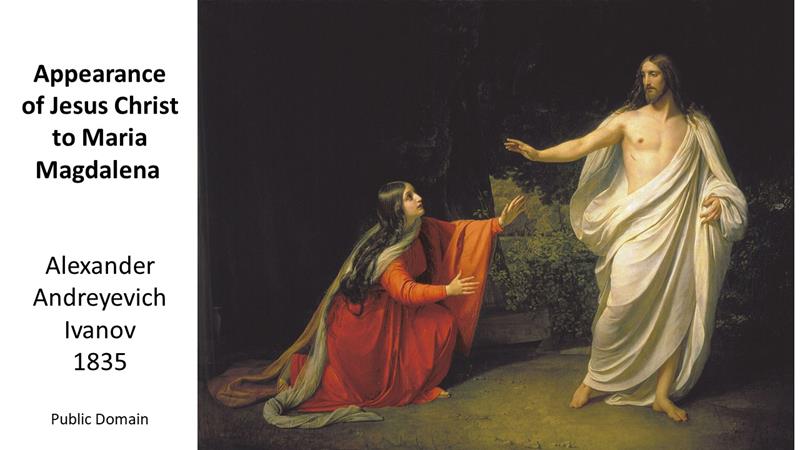 Mary hangs around. We get a sense of what she is thinking when she answers the angels who want to know why she’s crying. “They’ve taken away my Lord, and I don’t know where they laid him.” Mary Magdalene still believes that Jesus is dead. She assumes, because she can’t imagine otherwise, that some grave robber broke into the tomb and took the body away. In her mind, this is a terrible deed. It would be a terrible deed. You don’t mess with dead bodies. Even our military prosecutes soldiers who desecrate enemy dead. After all, once they are dead, they no longer pose a threat and are no longer enemies.
Mary hangs around. We get a sense of what she is thinking when she answers the angels who want to know why she’s crying. “They’ve taken away my Lord, and I don’t know where they laid him.” Mary Magdalene still believes that Jesus is dead. She assumes, because she can’t imagine otherwise, that some grave robber broke into the tomb and took the body away. In her mind, this is a terrible deed. It would be a terrible deed. You don’t mess with dead bodies. Even our military prosecutes soldiers who desecrate enemy dead. After all, once they are dead, they no longer pose a threat and are no longer enemies. This is an Easter unlike any we’ve experienced before. Instead of being together, wearing new clothes, bringing flowers to decorate the cross afterwards while kids hunt Easter eggs, we’re all separated as we strive to stop this virus that has unleashed death upon the earth. In some ways, we’re like the disciples, who were essentially hiding on that first Easter. Yes, Mary was out, as well as Peter and John for a short period, but once they saw Jesus’ body is gone, they head back to where the rest of the disciples are hiding. In fact, if you keep reading, you’ll see the disciples were not only hiding, they were behind locked doors.
This is an Easter unlike any we’ve experienced before. Instead of being together, wearing new clothes, bringing flowers to decorate the cross afterwards while kids hunt Easter eggs, we’re all separated as we strive to stop this virus that has unleashed death upon the earth. In some ways, we’re like the disciples, who were essentially hiding on that first Easter. Yes, Mary was out, as well as Peter and John for a short period, but once they saw Jesus’ body is gone, they head back to where the rest of the disciples are hiding. In fact, if you keep reading, you’ll see the disciples were not only hiding, they were behind locked doors. This is the meaning of this “great pause” we are living through right now.
This is the meaning of this “great pause” we are living through right now.